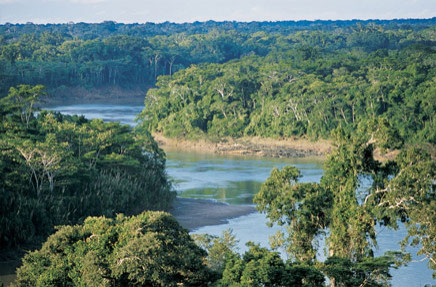UN Warns Peru: GDP Growth Is Harming The Environment

Peru is a paradox. According to a report by the United Nations, the country’s economy is growing fast and Peruvians have more money than ever. But they have insufficient health care and low education, and Peru's environment is suffering from all the development.
According to the U.N. Development Program, the Andean country is highly vulnerable to the impact of climate change, and most of the activities that have generated its recent growth -- like mining or construction, both legally and illegally -- are deeply harmful to the environment.
Francisco Santa Cruz, who directed the latest report on sustainability, explained that Peru has four of the five factors of vulnerability to climate change: low coastal zones, arid and semi-arid zones, flood zones, drought and desertification and fragile mountain ecosystems. Peru has all of them except drought and desertification.
According to the report, Peru has a high human development index. Between 1980 and 2012, life expectancy grew by 14.2 years, the average schooling increased by 3.2 years, and gross domestic product spiked 60 percent. But Santa Cruz said that such figures hide a different reality: “The growth does not come from education or health, but from predatory activities, like [resource] extraction and mining.”
Therefore, the human development and the increase of wealth are linked to activities that cause deforestation, resource wasting and an increase of vulnerability to natural disasters. The region of Peru that grew the most, Moquegua, is devoted almost exclusively to mining.
The report also notes that half of the provinces that saw a better development are in the jungle region, in the north of the country. “These regions have coca fields, and a high presence of illegal mining,” said Santa Cruz.
Peru is already noticing the effects of climate change. “The rainy season comes later, and when it does, showers are shorter and more intense. Infections like dengue and malaria have increased in the last 10 years, and that is due to humidity and temperature.”
This leads to a pattern change in farming and agriculture. The climate phenomenon of El Niño, which brings strong winds and rains and is responsible for many disastrous harvests, is getting stronger by the year.
The Amazon is also showing signs of environmental damage. “In the last year, the Amazon was a [net] emitter of carbon [dioxide], as opposed to oxygen. This is a dramatic alteration of the ecology of the Amazon and it affects the jungle population enormously,” Santa Cruz said.
Peru is set to host the U.N. climate change summit in 2014. In order to obtain U.N. funds for the event, the country must change its national strategy on climate change, the report read.
© Copyright IBTimes 2024. All rights reserved.





















